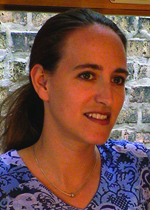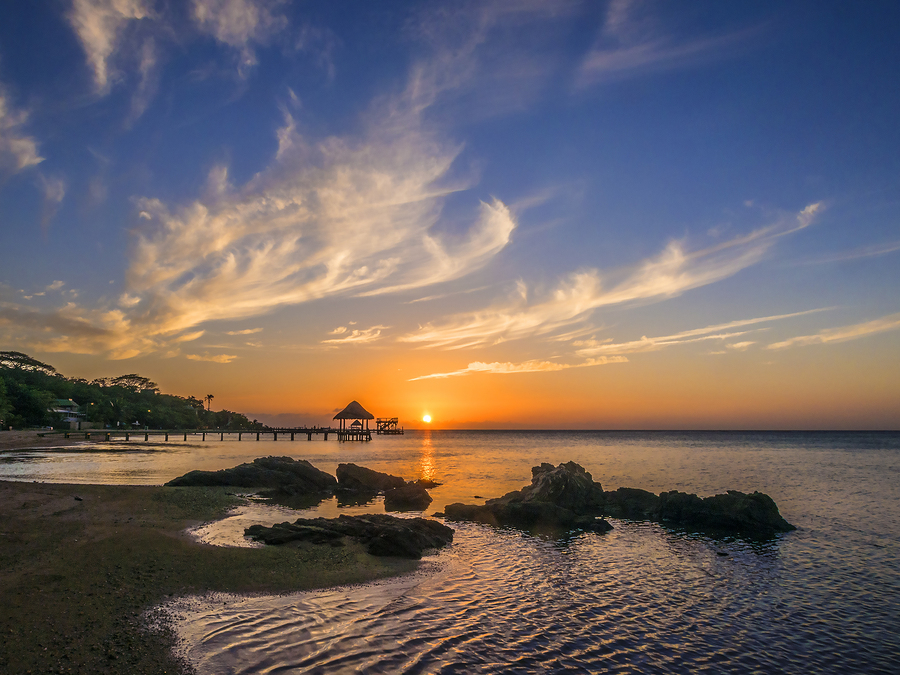Europe on $0 a Day
 What if vacation was not
something you scrimped
and saved for? What if every trip – your flights, hotel stays, food and more – was paid for by somebody else?
What if vacation was not
something you scrimped
and saved for? What if every trip – your flights, hotel stays, food and more – was paid for by somebody else?
Today, we speak with Jen Stevens, executive editor for expat and travel bible International Living, who can often be found with her toes in the sand and fingers on the laptop as a travel writer.
Jen explains the reality of working as travel writer, what editors are looking for these days, and how to get started. It can be a hard niche to break into… unless you have someone on the inside like Jen helping you out.
The Barefoot Writer: Hi, Jen. Great to talk to you. Let me get right into it.
So … many of our readers love to travel. And travel writing has always just seemed like the most romantic job in the world. But the truth can sometimes be totally unglamorous – like when a famous celebrity is shown without makeup and Photoshop.
TBW: So is travel writing all it’s cracked up to be?
Jennifer Stevens: You know, it really is romantic.
I’ve been all over the world and I have gotten to lots of those destinations for free. Plus, you really experience a place in a different way as a travel writer. You have this excuse to ask questions, meet people, and to get yourself into places you wouldn’t necessarily get into as a tourist.
TBW: I’m intrigued. Give me an example of a trip you were able to take as a travel writer.
JS: A few years ago, I took the family to Roatan, Honduras, an island in the Caribbean. The first week, I ran around a little bit, interviewed a few people, got to tour some amazing houses to gather details for some of the pieces I would write. But it wasn’t exactly hard labor. I ended each afternoon on the beach, cocktail in hand.
The second week was all family time – sandcastles, snorkeling. We ate lots of lobster and fresh fish.
And I made enough selling my stories to cover our airfare and most of our stay. I think in the end we were around $300 out of pocket. Not bad for a two-week family vacation on a Caribbean beach.
TBW: Wow!
JS: We had a great time. And essentially we spent two weeks on this gorgeous swath of white sand beach for what lots of folks would pay for a day at Disneyland.
TBW: So what exactly do travel writing assign- ments look like? Are there different types of “work? Are you writing mainly articles? Short? Long?
“The faster you “look” like a pro, the better. And the easiest way to do it is with these short pieces.”
JS: In the old days, there was a bigger market for longer, more “literary” articles. But readers’ attention spans are shorter today. And magazines, with fewer ads, have fewer corresponding editorial pages. As a result, editors are more often looking for short-and-sweet pieces. That’s the best way to break in. Start small.
These short pieces are actually very easy to write once you understand the trick. You can’t describe Paris in a paragraph and a half, of course. So in- stead, you narrow your scope. Write about a great little restaurant you found in the first arrondissement or recommend a specific tour you took. It can be just 200-500 words. A few paragraphs. That’ll be much easier to sell than a longer piece. And, as it happens, easier to write, too.
TBW: Okay. Short nuggets. Got it. But don’t you get less money for short articles?
JS: Well, that depends. First, consider that these short-and-sweet pieces can be fun to write. And they’re a lot faster to write than a long, narrative story is. So you can write more of them – and have more to sell, then – faster.
I think it’s important – especially when you’re just starting out – to get a few “clips” or sample articles under your belt. That’s how you build your credibility and set yourself up for the great perks travel writers can enjoy. The faster you “look” like a pro, the better. And the easiest way to do it is with these short pieces. Plus … you get a real feeling of accomplishment when a published article has your name on it.
TBW: So what about the money?
JS: The pay for travel articles varies widely. A short piece might earn you $75 or $100. That’s not a lot. But then again, it might take you just half an hour to write.
And remember, some of the compensation with travel writing comes not in the cash you earn, but in the perks you can enjoy.
Now, having said that, sometimes travel writing can pay very well – up to $1 a word or even more. To give you an example, I’ve done several stories for an airline magazine. One of them – a short piece of 6 paragraphs (304 words) about a day trip readers could take up into the mountains from Colorado Springs – paid me $300. But then I sold the editor photos to go with it. (My husband takes great pictures.) She was so pleased with the “package” that she paid an additional $800 for the photos and laid the piece out on a beautiful two-page spread. So we earned a total of $1,100 on that. A piece I wrote in under an hour about a hike we took with our kids one weekend.
TBW: That does sound pretty good.
JS: Travel writing is about lifestyle. If I can sell enough to cover the cost of a trip, or even just cover maybe the cost of my airfare, then that’s a pretty good deal as far as I’m concerned.
TBW: And now … let’s talk about those perks you mentioned. What can you get?
JS: Let me give you some examples.
One woman who has taken my travel writing course, Sandra Kennedy, has seen her articles published in magazines around the world. She was invited to try out a beach resort in Mexico for free. And she spent about a month in Ecuador, traveling around. The whole thing was covered.
Another gentleman who took my course, Roy Stevenson, has had more than 550 articles published in over 160 different magazines, newspapers, and online publications. He’s a real pro today. And he’s expert at parlaying that status into amazing perks. This month, he’s taking a two-week, self- guided “press trip” to southeast Alaska, and in June he took a free, four-day wine cruise through the San Juan Islands on a schooner. He’s stayed at dozens of plush resorts, boutique hotels, and B&Bs around the U.S and visited dozens of fascinating museums and castles around the world … all of it on the house.
TBW: I love it. But how does it work?
JS: Here’s the thing: an organization, a hotel, a tour operator, airline, anybody … they can take out an ad and hope that people will respond and use their services.
But another thing they can do is hope to get good press. If Conde Nast Traveler mentions this little hotel, you as a reader might say, “Hey, this place sounds great. I should go there.” There’s a certain credibility that comes with somebody’s recommendation.
And so the hotels, airlines, resorts, tourist boards, and even, sometimes, the economic-development arms in countries will invite writers to come and experience a place for free in hopes that they’ll write about it.
For example, a few years back, when we were hosting our annual travel writer workshop in New York, one of our attendees went out to a museum during the lunch break. At the workshop that morning, we had just talked about getting perks.
So she was at this museum and got a VIP tour for free. She came back and said, “Sorry I’m late, but what you said totally works. I just went and did it.”
She lives in New York. And now she is on that museum’s press list. So every time they have a new opening or some cool thing is going on at the museum, she gets invited to come for free.
TBW: That’s awesome. It’s almost like you’re a celebrity. So we’ve talked about the fun stuff. But what are the chances of getting hired? How much demand is there really for travel writing?
JS: There is actually a great demand for travel writers who understand what editors are looking for. It’s important to spend some time looking at specific publications to get a concrete sense for what you might be able to write for a certain section or department.
TBW: What else?
JS: When I started in this business, we didn’t have the Internet. Today, you’ve got print magazines and newspapers, but you also have websites that correspond with those print publications. And they’re posting tons of content online. Plus, there are many publications that are online only. They are all looking for content. And when you can produce that content, not only can you get paid, but it’s also your ticket to the free stuff.
TBW: Okay, so how does a newbie – someone with no experience or portfolio – break into the industry?
JS: First off, you don’t have to travel to be a travel writer. And it’s actually a really good way to get started, writing about places you know close to home.
TBW: I’m confused. You don’t have travel to be a travel writer?
JS: Right. A lot of publications like to have someone local write about a place because they figure you’re going to know things that the average person passing through might not. And that’s true. You know where you go to have dinner, and you know those little insider, neighborhoody places that aren’t necessarily on the tourists’ strip, and so you can really capitalize on that.
You go out, bring a camera, snap a few pictures, write up a little blurb, sell it, and now all of a sudden, you’ve got an article. You didn’t have to put any money out to do it. You get some practice. And you start gathering those “clips,” as I said before, which give you the credibility you need to land those great perks.
TBW: Okay, good. So once I have a list of publications and websites I want to write for, how do I get their attention?
JS: First, follow the writer’s guidelines. These are usually posted on a publication’s website. They will tell you exactly what the editors are looking for as far as submissions go – what they want to see and how they want to see it, and where and how you should send in your article idea. (HINT: Do exactly what they say. You would be shocked, shocked and horrified, at how few writers actually pay attention to the writer’s guidelines.)
If you do nothing but follow the directions, you’ll put your story in the top 50 percent of what editors are getting in the door.
TBW: So you’ve gotten a foot in the door. How do you make sure your piece gets picked?
JS: To get editors to pay attention to your material, make sure that you have an idea that is very specific. Like I said, they are not interested in your article about Paris. But they would love to hear about the best crepe place in the first arrondissement. That, you can sell. Narrow scope, specific idea, geared directly at a publication’s readership. That’s the key.
TBW: Got it. Any last words?
JS: If you’re looking for a way to fund your travels … get VIP treatment wherever you go … take more and better vacations than you could ever normally justify, then put travel writing into your bag of tricks.
It’s fun. You don’t need any special qualifications beyond a willingness to be opinionated and an interest in seeing new places and meeting new people.






